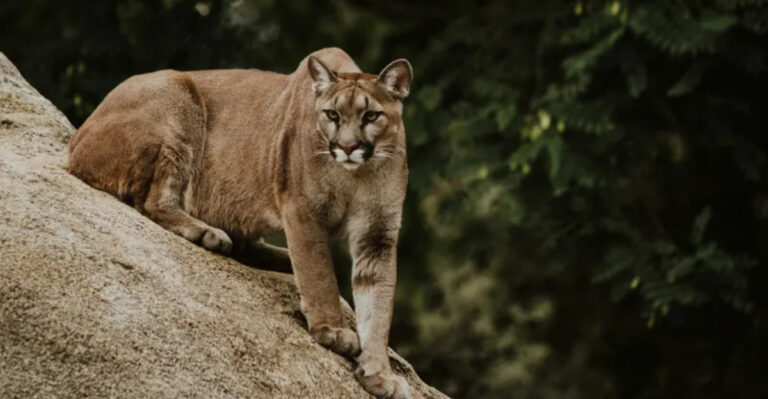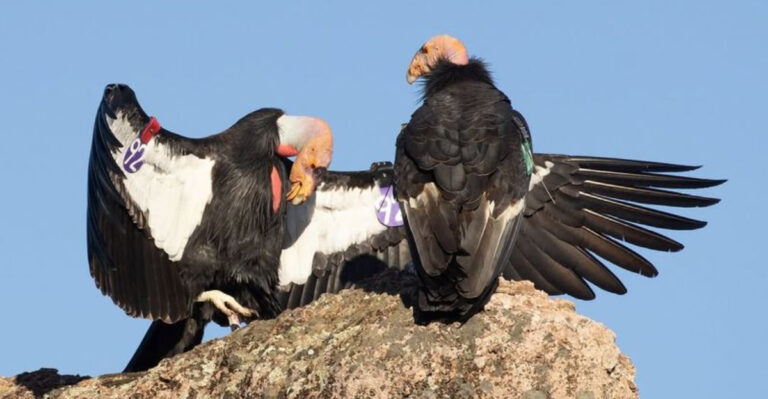14 Ocean Creatures You Have Never Heard Of
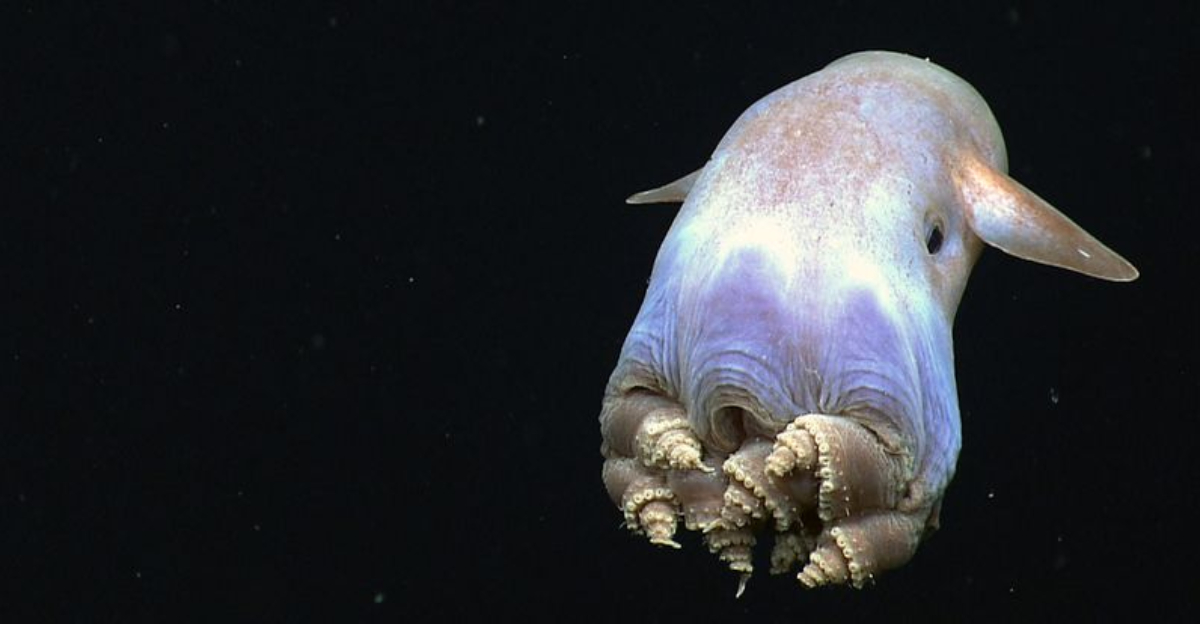
The ocean remains Earth’s last great frontier, hiding creatures so bizarre they seem plucked from science fiction.
Deep beneath the waves, strange animals with incredible adaptations thrive in environments we can barely visit. From transparent blood to bioluminescent lures, these remarkable creatures showcase nature’s endless creativity in the vast, mysterious underwater world.
1. Barreleye Fish

Gazing upward through its transparent dome, the barreleye fish hunts with tubular eyes that rotate inside its see-through head. This deep-sea marvel was only photographed alive in 2004.
Its ghostly appearance serves a purpose – the clear head allows it to spot prey swimming above while remaining nearly invisible to predators. Living at depths between 2,000-2,600 feet, these fish grow to about 6 inches long.
2. Mantis Shrimp
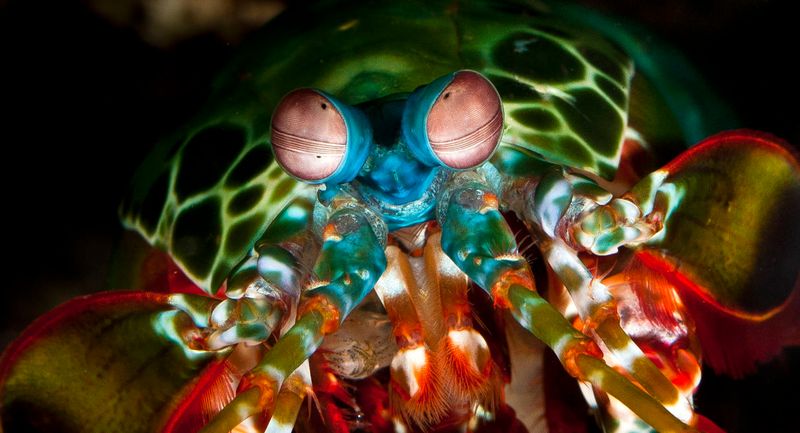
Forget about superhero powers – the mantis shrimp packs the fastest punch in the animal kingdom! These colorful assassins can strike prey with the force of a .22 caliber bullet, creating underwater shock waves that can break aquarium glass.
Even more mind-blowing? They see colors we can’t imagine, with eyes containing 16 types of color receptors compared to our measly three. Some species grow up to 18 inches long.
3. Bobbit Worm
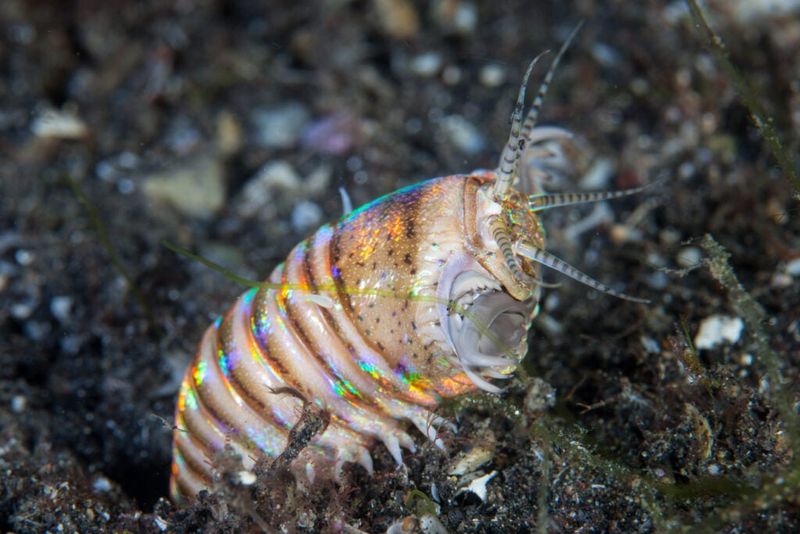
Lurking beneath sandy ocean floors waits one of the sea’s most terrifying ambush predators. The bobbit worm stretches up to 10 feet long but hides with only its razor-sharp jaws exposed.
When prey swims too close, it erupts from hiding with lightning speed, dragging victims underground. Their bodies shimmer with iridescent colors despite their nightmarish hunting tactics. Some specimens have lived over 20 years in captivity.
4. Vampire Squid
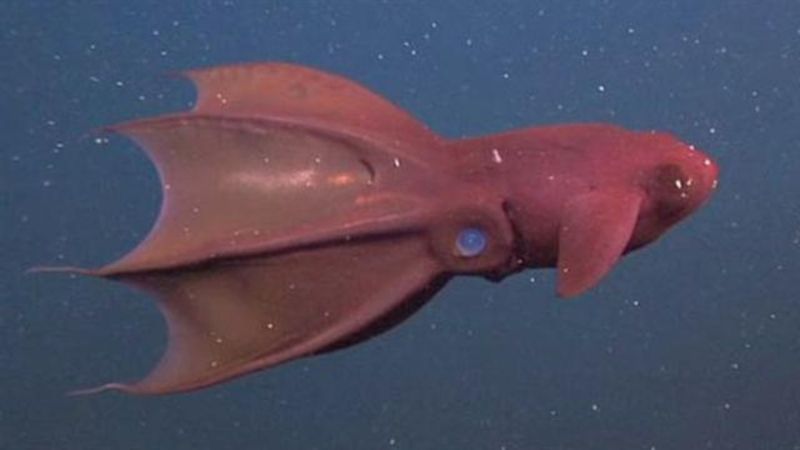
Neither vampire nor squid, this ancient creature represents its own unique order of animals. When threatened, it wraps its webbed arms around its head, revealing spiky projections that give it a cloaked, spiny appearance.
Unlike its name suggests, it doesn’t suck blood – it’s actually a gentle scavenger feeding on marine snow. Living in the oxygen-minimum zone 2,000-3,000 feet deep, it’s a living fossil virtually unchanged for millions of years.
5. Blobfish
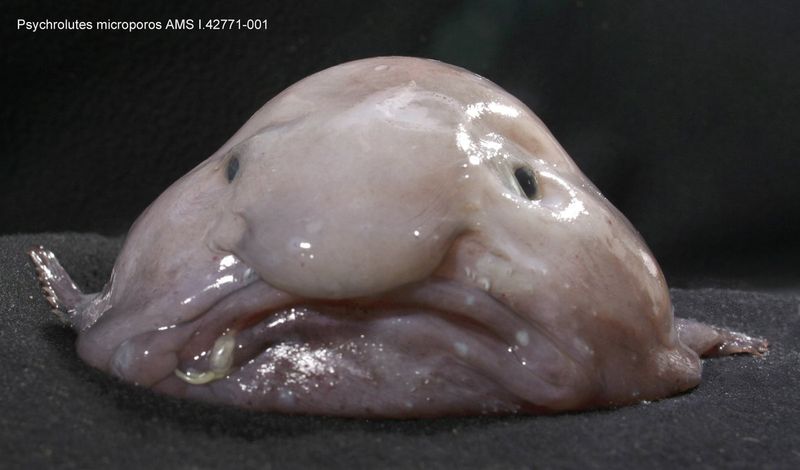
Voted the world’s ugliest animal, the blobfish looks drastically different in its natural habitat. The gelatinous blob we recognize exists only after decompression damage when brought to the surface.
At depths of 3,000 feet, water pressure makes it look like a typical fish. Their bodies contain minimal muscle, letting them float just above the seafloor without swimming. These passive hunters open their mouths to consume whatever edible items drift by.
6. Christmas Tree Worm
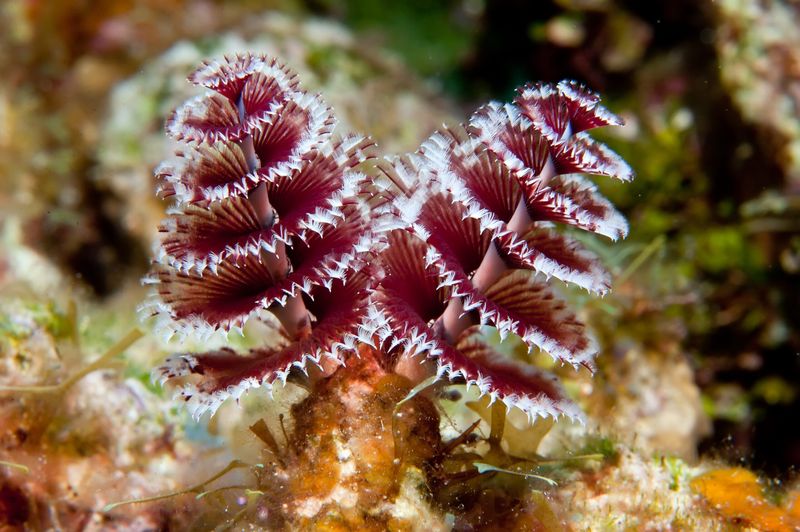
Sprouting from coral heads like miniature holiday decorations, Christmas tree worms add splashes of electric color to reef landscapes. Each spiral “tree” is actually a specialized breathing apparatus used to filter food particles from seawater.
When startled, these worms instantly retract into their coral homes. They create permanent tubes by secreting calcium carbonate, becoming part of the reef structure. Some individuals live over 40 years in the same spot.
7. Gulper Eel
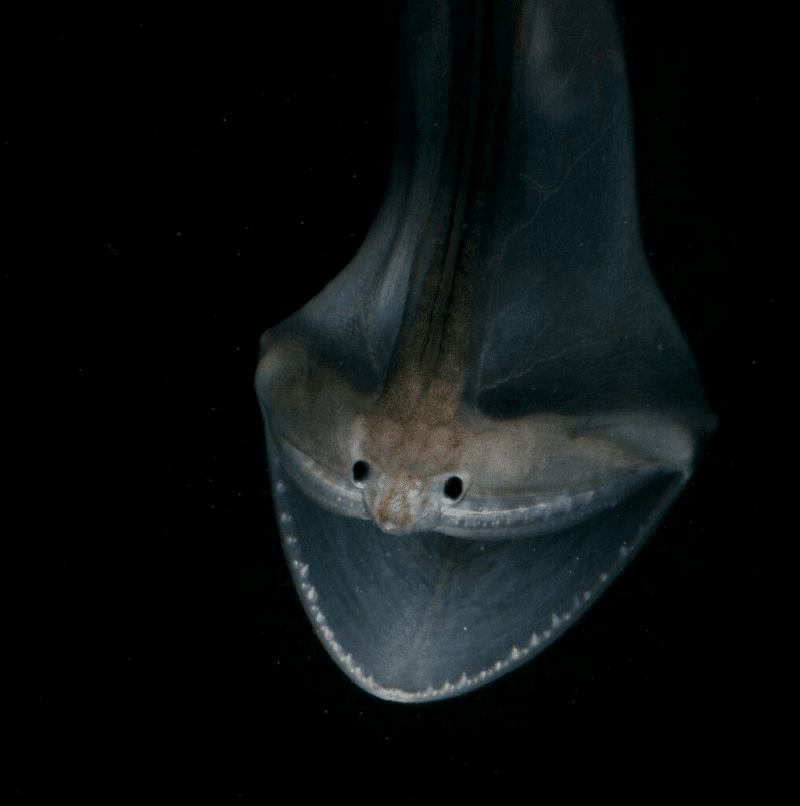
Swimming through the midnight zone comes a creature with a mouth bigger than its body. The gulper eel’s massive jaws unfold like a parachute, allowing it to swallow prey larger than itself.
Its bioluminescent tail tip works as a lure, attracting curious fish into its trap. Despite its fearsome appearance, this deep-sea oddity grows only about three feet long, with most of that length being its whip-like tail.
8. Dumbo Octopus
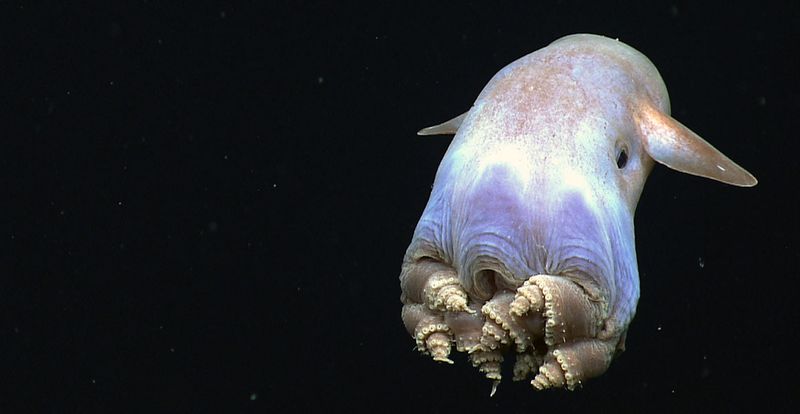
Named after Disney’s flying elephant, these adorable deep-sea explorers propel themselves using ear-like fins that flap above their eyes. They’re the deepest-dwelling octopuses known, found at crushing depths of 13,000 feet.
Unlike their relatives, dumbo octopuses don’t squirt ink when threatened – there’s no need in the pitch-black deep. They swallow prey whole rather than breaking it apart. Some species are tiny enough to fit in your palm.
9. Flapjack Octopus
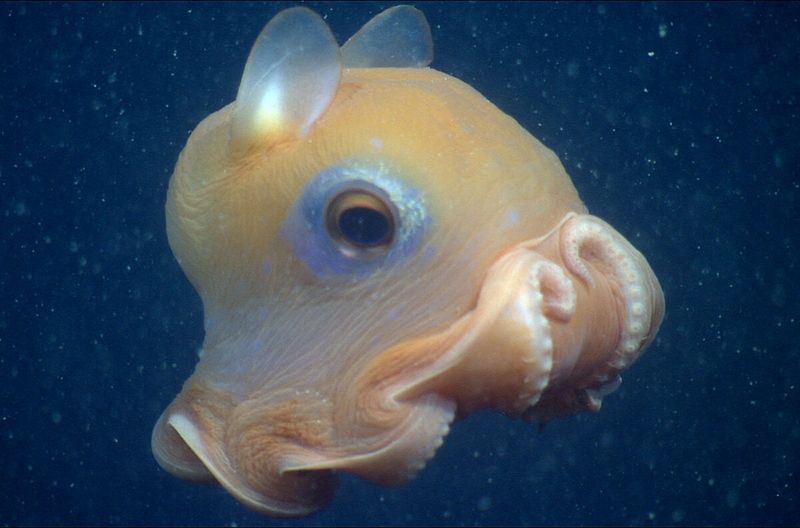
Inspiration for Finding Nemo’s Pearl, the flapjack octopus embodies underwater cuteness with its pancake-shaped body and adorable googly eyes. These small cephalopods typically measure under 8 inches across.
They pulse their webbed arms to hover above the seafloor like tiny pink UFOs. Living between 1,000-1,500 feet deep, they were only discovered in the 1980s. Their gelatinous bodies contain special proteins that help them withstand crushing deep-sea pressure.
10. Yeti Crab
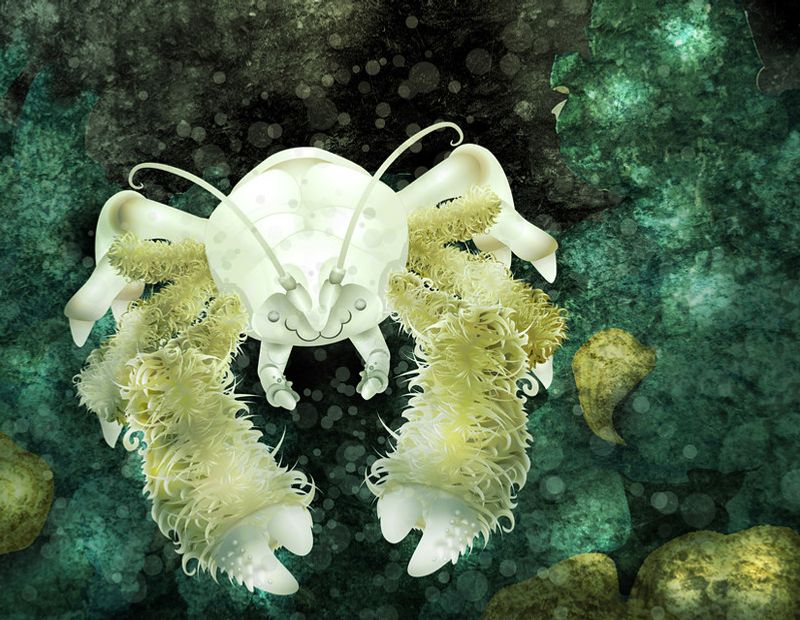
Discovered in 2005, the hairy yeti crab farms its own food in one of Earth’s most extreme environments. Its furry arms aren’t actually fur but specialized bacteria-growing setae.
Living near scalding hydrothermal vents where temperatures exceed 700°F, these crabs wave their arms over the vents like farmers tending crops. The bacteria they cultivate become their primary food source. With no eyes, they navigate their pitch-black world through touch and chemical sensing.
11. Sarcastic Fringehead
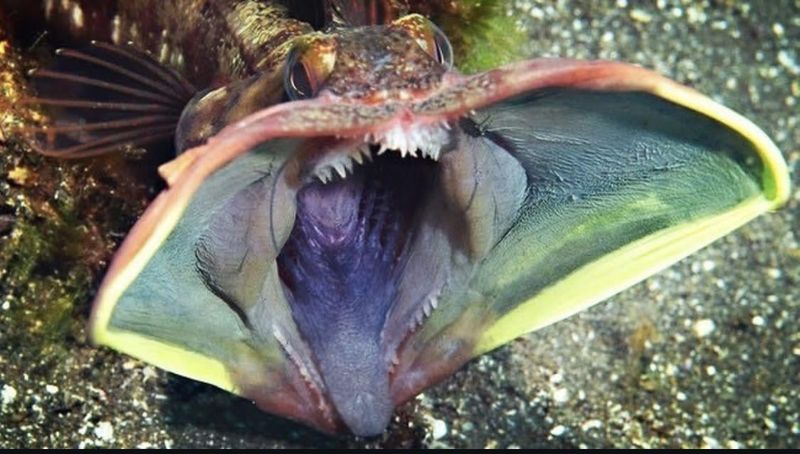
Despite its amusing name, the sarcastic fringehead is all business when it comes to territorial disputes. When challenged, this small fish unfurls an enormous mouth lined with needle-sharp teeth in a spectacular threat display.
Two competing males will press their open mouths against each other like kissing, determining dominance by who has the bigger jaw. Found in Pacific waters off California, they hide in shells, crevices, or human trash like bottles and cans.
12. Glaucus Atlanticus
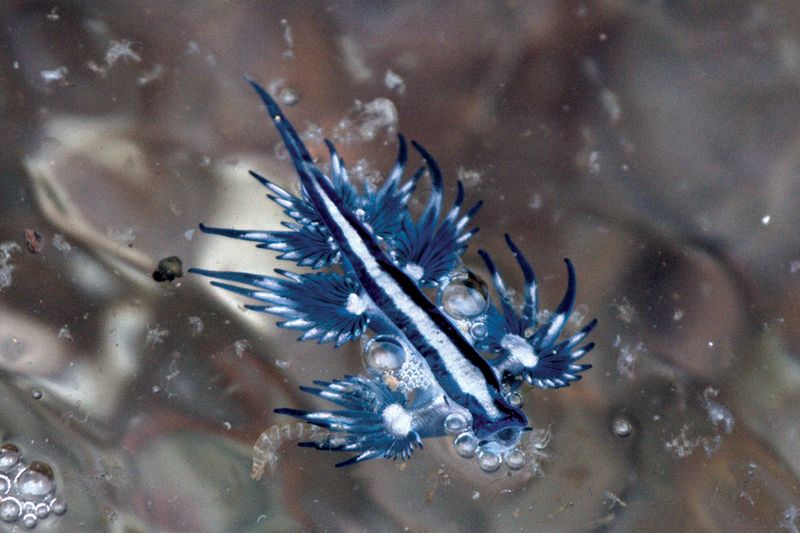
Floating upside-down at the ocean’s surface comes the blue dragon sea slug, one of the most beautiful yet dangerous creatures in the sea. This tiny predator, barely an inch long, hunts the deadly Portuguese man o’ war.
Not only immune to its prey’s venom, it actually stores the stinging cells for its own defense. The blue coloration provides perfect camouflage – blue on top blends with the sky when viewed from below, while silver underneath matches the water’s surface when seen from above.
13. Coffinfish
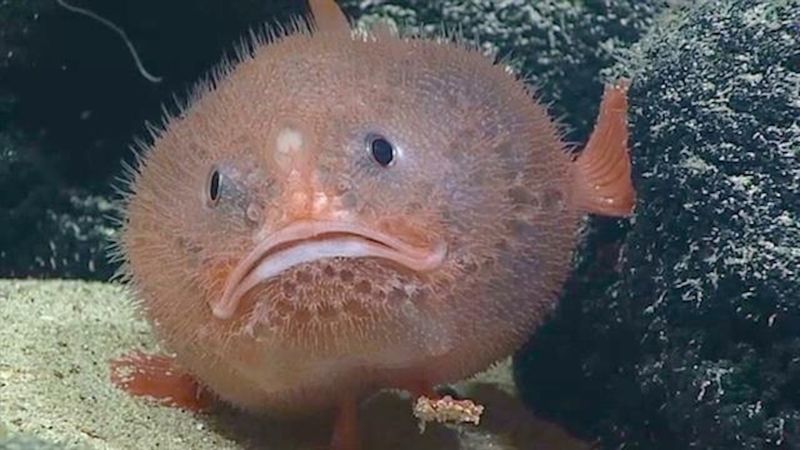
With a face only a mother could love, the coffinfish uses a fishing-rod-like lure sprouting from its head to attract prey in the deep ocean. This ambush predator can inflate its body with water when threatened, transforming from a sluggish blob to a rigid, spiny ball.
Their skin lacks scales, instead featuring small spines and wart-like protuberances. These bizarre anglerfish relatives have modified fins that function like feet, letting them “walk” along the seafloor hunting for unwary victims.
14. Japanese Spider Crab
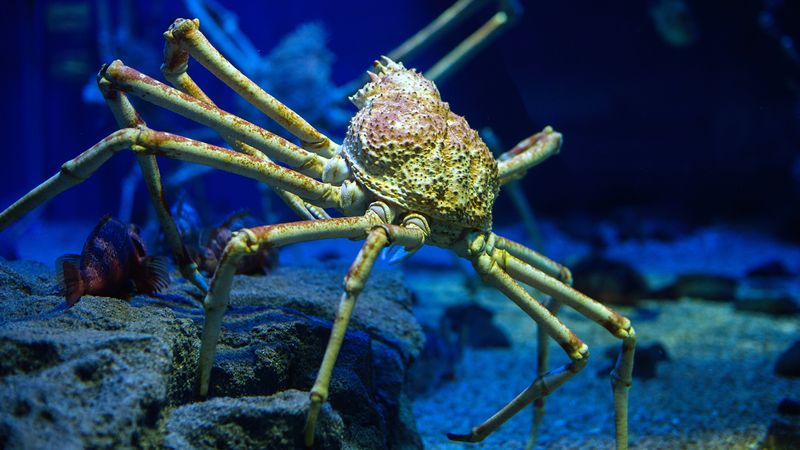
Stretching an astonishing 12 feet from claw to claw, the Japanese spider crab holds the record for largest arthropod on Earth. Despite its intimidating size, it’s a gentle scavenger that picks at dead organisms on the seafloor.
These ocean giants can live over 100 years in the wild. Their exoskeleton often becomes a mobile garden, collecting algae, sponges and anemones that provide perfect camouflage. Young crabs actively decorate themselves, while adults become natural ecosystems through passive accumulation.

